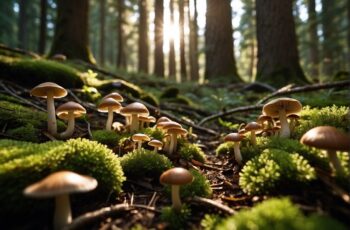As an avid outdoors person, you may already appreciate the allure of foraging for wild mushrooms, and the black morel is a treasured find for many. Prized for its earthy flavor and unique honeycombed appearance, the black morel mushroom, a species of the genus Morchella, emerges as one of nature’s culinary delights. Harvesting these fungi not only provides a satisfying connection to the wild but can also be quite lucrative due to their sought-after status in the culinary world.
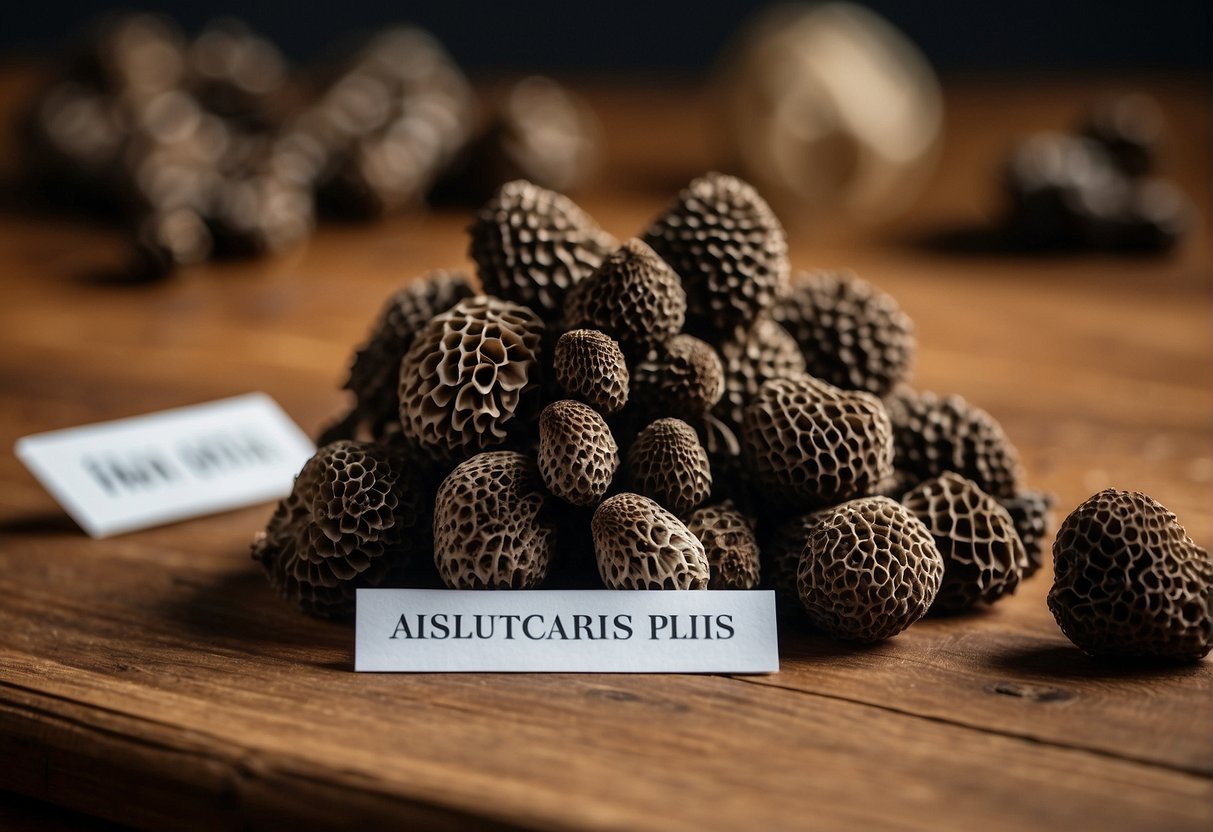
Understanding the market value of black morels is essential if you’re looking to trade, whether it’s selling your finds or purchasing them for your gourmet recipes. The price of black morels fluctuates depending on factors such as seasonality, availability, and location of harvest. These mushrooms typically command a higher price compared to other morel varieties, reflecting both their rarity and the savory depth they bring to dishes. On the commercial market, dried black morels can fetch a significant sum, and fresh ones are not far behind in value.
When you’re out in the wilderness, keep your eyes peeled for these elusive fungi, often found in burn sites or coniferous woods after a fire. Identifying true black morels from false ones is crucial for your safety and the enjoyment of your forays into the forest. Their distinctive look – dark, cap with a honeycomb pattern atop a white to pale stem – sets them apart, making them easier to spot amongst the forest’s detritus. Remember that patience and respect for the environment are key, as sustainable foraging ensures that morel populations thrive for seasons to come.
Understanding Morels
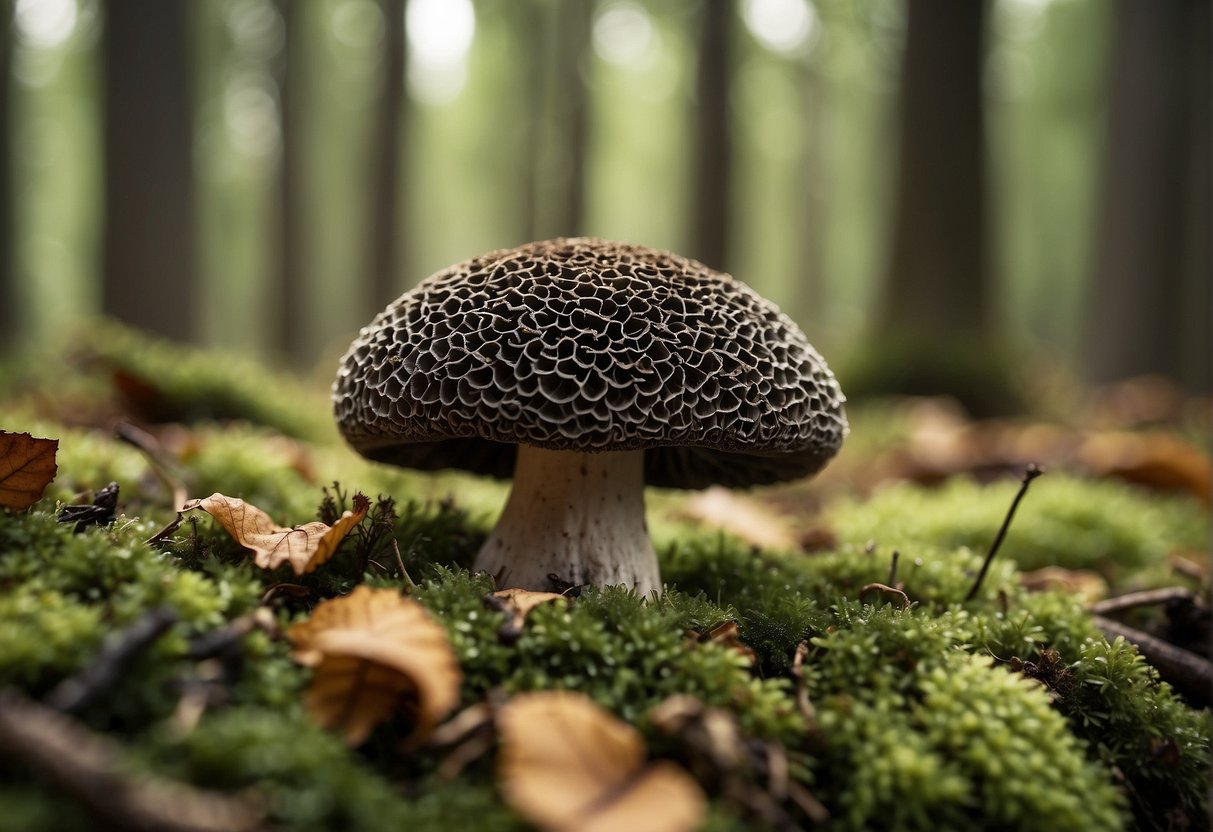
Before embarking on the rewarding journey of morel foraging, it’s essential to familiarize yourself with the distinct species and their preferred habitats to increase your chance of a bountiful hunt.
Species and Habitat
Morels are a genus of edible wild mushrooms known for their unique honeycomb appearance. Among the various species, black morels (Morchella elata) and yellow morels (Morchella esculenta) are the most sought after by foragers. These delicacies favor woodland environments and are often found in North America, although they can appear across the globe.
Morels have a symbiotic relationship with certain trees, thriving in forests with ash, elm, and poplar. They pop up in wooded areas where the soil is moist but well-drained, frequently emerging after a rain following a warm spell. Seasonality plays a big part in morel emergence, typically in spring, when daytime temperatures are between 60 to 70 degrees Fahrenheit and the night temperatures are above freezing.
Foraging for Morels
Successfully foraging for morels requires a keen eye and a bit of know-how. When you’re out in the hunt, ensure to scan areas where the soil is rich in organic matter, particularly where there’s been recent disturbance such as a fire or a logging event.
The best time to forage for morels is when the weather has been wet, followed by warm weather, as these conditions coax morels out of their slumber. Remember, morel mushrooms are a wild species, and their presence is subject to whims of nature, so even in ideal habitats, their appearance can’t be guaranteed—part of the thrill and challenge for you as a forager.
Keep an eye out for dead or dying trees, especially those of ash and elm as morels often appear in these environments. As you seek out these camouflage experts, practice environmentally friendly foraging: take only what you need, tread lightly, and consider using a mesh bag to allow spores to disperse and ensure future harvests.
Culinary Significance
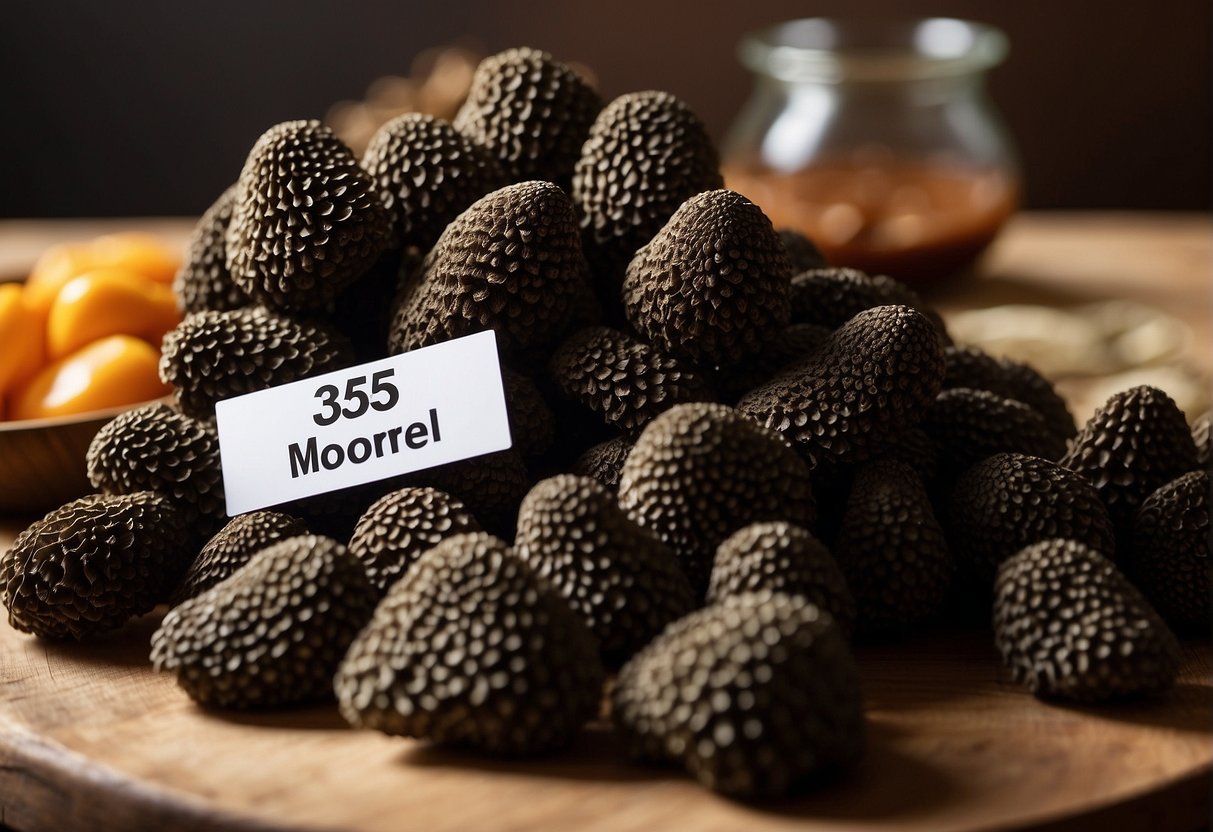
In the culinary sphere, black morels stand out for both their distinctive taste and nutritional offerings. They’re a treasure you might discover on a foray into the wilderness and later enjoy at your dinner table.
Culinary Uses
Black morels are a staple in gourmet cooking, praised for their unique flavor profile that contains a mix of nutty and umami tones. You’ll find them adding depth to sauces and pastas, often sautéed to enhance their taste. Professional chefs and food enthusiasts alike seek out fresh morels to elevate dishes with their sophisticated flavor, making them a coveted find for menus at high-end restaurants.
- Sautéed and served with steaks or poultry
- Incorporated into risottos or pasta dishes
- Used as a flavor booster in soups and stews
Nutritional Value
As for nutrition, black morels provide you with more than just taste. They’re a good source of protein and fiber, which are important for your outdoor adventures as they contribute to sustained energy. Morels also contain copper, potassium, and vitamin D—essential nutrients that support your overall wellness.
| Nutrient | Benefit |
|---|---|
| Protein | Supports muscle repair and endurance |
| Fiber | Aids in digestive health |
| Copper | Essential for energy production |
| Potassium | Helps regulate fluid balance |
| Vitamin D | Important for bone health and immunity |
When you chance upon these fungi in the wild, you’re not just picking a mushroom, you’re harvesting a component of refined taste and valuable nutrition for your kitchen.
Market Insights
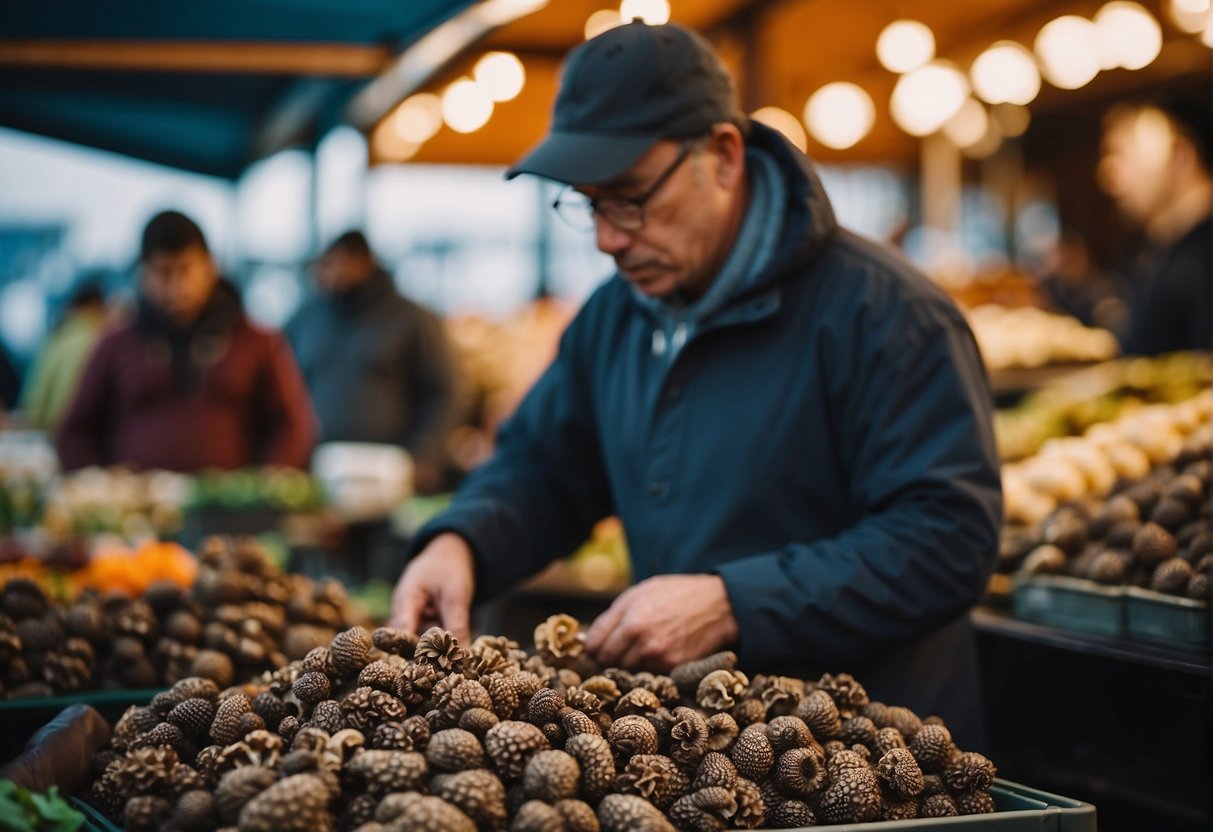
In traversing the landscape of the black morel mushroom market, you’ll find the terrain shaped by two key elements: pricing and supply vs. demand. Understanding these aspects is crucial for anyone looking to invest effort in foraging or purchasing these prized fungi.
Pricing Factors
Black morel mushrooms are renowned for their distinctive earthy taste and are a favorite for experienced foragers. The price per pound of these mushrooms can reflect several factors. Most prominently, the labor-intensive nature of foraging for morels, coupled with their limited and seasonal availability, drives up costs. Generally, fresh black morels command higher prices, often ranging from $30 to $60 per pound, depending on their size and quality. Dried morels, though more shelf-stable, retain a high value due to the concentration of flavor, fetching even steeper prices.
Supply and Demand
Your foraging expeditions will reveal that black morels are not always easy to come by, their availability hinging on specific environmental conditions. Seasonal availability impacts not just the activity of hunting for these mushrooms but also the market supply. In years where morels are less abundant, prices can spike significantly. Conversely, a bountiful season could lead to a more saturated market, but even then, their value rarely dips dramatically. Enthusiasts and gourmets alike maintain a high demand, ensuring that black morels retain their status as a coveted commodity in the marketplace. Remember, the quality of your find will directly influence its marketability.
Procurement and Use
When embarking on the quest for black morels, knowing where to find them and how to keep them at their peak is key. Foragers with an eye for quality are rewarded with a premium ingredient that elevates cooking, but it’s essential to understand the processes involved from forest to plate.
Buying Tips
As a forager, it’s important to recognize that black morels flourish under specific conditions, favoring a soil temperature just right for their growth. When you’re in the market for these fungi, note that their availability can vary, depending on factors like seasonal weather patterns and moisture levels. Look for morels with a firm texture, a sign that they’ve been freshly harvested. It’s also crucial to consider the intensive labor that goes into harvesting these sought-after mushrooms, often reflected in the price.
Remember, when buying, to select those with a well-defined shape – indicative of careful handling during shipping and transport. Purchasing morels directly from knowledgeable foragers can enhance the overall quality of your selection. These experts can often provide valuable advice on preservation and preparation methods that maintain the integrity of the morels’ unique flavor.
Storage and Preparation
Once you’ve acquired your black morels, proper storing is essential to maintain their quality. Store them in a cool, dry place as high moisture levels can lead to spoilage. A paper bag in the refrigerator works well, keeping them breathable and extending their shelf life.
For preparation, begin with rinsing your morels in salt water to remove any hidden debris and critters. Pat them dry gently to avoid damaging their delicate structure. When it comes to cooking, black morels are particularly suited for sautéing in butter or a quality fat. They pair beautifully with rustic flavors and provide an earthy foundation to your dishes when cooked correctly. Remember not to overcook them, as they should retain some texture.
Be mindful of temperature when preserving morels; they can be frozen or dried, with drying being the preferred method for long-term storage. This method concentrates their flavor and extends their usability in your culinary adventures, ensuring you have access to their distinct taste year-round.

